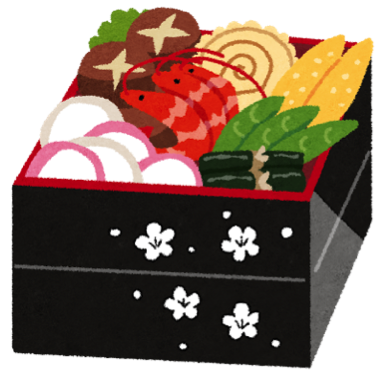This post is also available in:

One way of understanding the culture of a country is through its language. Learning Nihongo is one of the most important things to consider when you have plans of moving to Japan to study or for work. Nihongo may prove to be one of the most difficult languages to learn, but you might want to reserve your judgment until you take JLPT N1. How hard is it to pass?

What is the JLPT N1 That Everyone’s Trying to Pass?
Let’s talk a bit about history. The Japan Foundation and Japan Educational Exchanges and Services have been offering the Japanese-Language Proficiency Test, globally known as JLPT, since 1984 to evaluate and certify the Japanese proficiency of non-native speakers.
Do you know that the JLPT is also considered the largest-scale Japanese-language test in the world? While the last two years have seen a drop due to COVID-19, there were as many as 1,168,535 examinees around the globe in 2019 alone! The test is conducted in Japan and overseas.
In 2010, a revised version of the test was introduced. According to the JLPT website:
The new test takes full advantage of the most advanced research in Japanese pedagogy and testing theory and reflects the vast wealth of data accumulated since the original JLPT was launched over 25 years ago.
The test has five levels – N1, N2, N3, N4 and N5 – and these measure comprehensive Japanese-language communicative competence through Reading, Listening, and Language Knowledge, specifically Vocabulary and Grammar. You have to take note that knowledge of the language is not enough, as JLPT also tests the ability to use the knowledge in actual communication and in performing daily tasks.
Find dramas to watch and improve your Japanese through this article!
The website information added that JLPT uses “scaled scores” which are calculated based on the “answering patterns” of each examinee, not on “the number of questions correctly answered.” The scores are calculated mechanically and also strictly checked by specialists.
What is the Hardest Part?
In order to pass the JLPT, you have to take all the required test sections and earn a total score to be at or above the Sectional Pass Marks and Overall Pass Mark. If there is one section where your score is below the sectional pass mark, you are most likely to fail even if your total score is high.
I know how that makes you feel. Maybe you’re wondering if it’s possible to inquire about the details of your score, but unfortunately, you can’t. The administering bodies do not accept any inquiries about an examinee’s test result.
What Makes JLPT N1 So Difficult?
According to the JLPT website, the easiest levels are N5 and N4 which measures the level of understanding of basic Japanese learned in language classes, while the difficult levels are N1 and N2 which measures the level of understanding of Japanese in a broad range of circumstances like the use of the language in everyday life. What bridges the levels between N1, N2, and N4, N5 is N3.
N1, the most difficult level measures the ability to read and understand Japanese in writings on a variety of topics.

You will be tested on your ability to read Japanese newspaper editorials, critiques, and other reading materials with profound narratives. The same goes for the listening test, where your ability to comprehend news reports, coherent conversations, and lectures about a variety of topics is tested.
A large part of the vocabulary needed to pass N1 are often what could be called “niche” words we don’t come across in daily life, or idioms. In fact, when looking at N1 practice books, many Japanese people are equally confused and impressed with the vocabulary and sentence structures that we are required to learn – “This will be on the test?”, “I’ve never used that idiom in my life!”
Jerome Impas, an IT Manager based in Tokyo, echoed that N1 is the highest and indeed the most difficult level. He also pointed out that prior to taking the test itself, the hardest thing to do is finding the time to consistently study because of other equally important priorities. A lot of working professionals can relate to this challenge.
Why Is Passing the JLPT an Advantage?
You may have known friends who took and passed the JLPT for employment screening and for work promotions, while some use it to qualify for university admissions. Indeed, the use of JLPT results has become diverse through time.
Immigration
According to the information on the JLPT site, your JLPT result can earn you points for preferential treatment for immigration to Japan. “Those who pass JLPT N1 receive 15 points, N2 receive 10 points under the government’s “Point-based Preferential Immigration Treatment System for Highly Skilled Foreign Professionals,” and individuals with a total of 70 points or higher receive preferential treatment at immigration.”
University Admission
In principle, universities in Japan also use the results of JLPT for Japanese University admission for international students. If you are planning to come to Japan as a student, it would be best to directly inquire about your school about its language proficiency requirement.

Career Advancement
JLPT certificates also offer various advantages not only as academic credit and graduation certification in some schools but you can also use it to be qualified to work in some companies. JLPT N1, in particular, is required among licensed medical professionals who plan to take Japan’s national exams for medical practitioners, as well as, for overseas nursing school graduates who want to take Japan’s assistant nurse exams.
How to Prepare For and Pass the Test?
Kodai Hino, a Nihongo language teacher who works in Alliance Software Inc, said JLPT is just like any kind of language test that requires you to be motivated as well as being prepared. He said:
First thing, we need motivation. It’s very hard to keep being motivated when the score is not as you expected, and that usually happens when you try to reach a certain level. If you aim the highest level, you should be motivated enough and consider the exam as a means of improvement.
Find Your Purpose
You don’t need to have a grand purpose at that. Why do you want to take the test in the first place? Do you want to take it for educational advancement, for employment, for testing your own abilities, or for a better life is really up to you.
Hino said that passing is not the sole purpose of learning the language but becoming an expert yourself. Having a purpose for learning the language will help you get through it.
Don’t Fear Failure
Failing is just part of the process you need to go through to become an expert at something, said Hino. He added:
As we all experience, studying for passing is very stressful and because we know it, most people give up on studying the moment they go out of schools because they are afraid to fail. We need to stop being terrified of failure and start to accept and welcome as many failures as needed to overcome the test until we get to that certain level.
Choose a Suitable Level For You
Test questions differ according to level, said Impas. Different questions are provided to measure the Japanese-language competency of examinees as accurately as possible. Choose a suitable level when taking the test.
Find a Language Exchange Partner
Lennen Virrey, who’s working in Alliance Software Inc. in Japan, shared his personal experience. “I’ve always sucked at grammar but for grammar to really stick you have to use the language, which means you have to find language exchange partners.”
He added that JLPT measures your understanding of the Japanese language, not the ability to speak it, but having someone to actually practice Japanese with is more effective and more fun.
Practice and Repetition
Impas said consistent daily self-study will help you. If you are going to study Japanese weekly, you think of it as your review time. Your main class is your own study time that you should do daily. Nobody will gain mastery of the language if your only exposure is a 2-hour class weekly.
“You can technically jump into higher-level but the barriers are high. Consistent practice and studying are key here. Like any other new things to learn, you have to spend time learning the foundation and structure of the language and spend time familiarizing it. First, decide which level to master, then spend time and effort to master the vocabulary, grammar structure, sentence construction and comprehension of that particular N-level. The difficulty will differ as well depending on the students’ exposure to the language before,” he added.
Cultivate an Interest in the Japanese Culture
Virrey said that cultivating an interest in the culture, be it traditional or pop culture like anime, music, or food, can give you the boost you need. Learning the language becomes a natural step and not just an end goal.
Choose the Right Resources For You
There are a variety of resources today, especially online, that can aid your language study. Virrey said you can improve your Kanji recognition through books, mobile apps, and even YouTube, and you can improve your listening skills through consuming Japanese media – music, movies, TV series, podcast, among others. Just pick the right one for you and take advantage of it.
Check the JLPT N1 Official Practice Workbooks
According to the JLPT site, while the test questions of every exam are not published, examinees can still check the Japanese-Language Proficiency Test Official Practice Workbooks released in two volumes since the 2010 revision of the test. “The Official Practice Workbook published in 2012 and the Official Practice Workbook Vol. 2 released in 2018 each contains, for all levels, questions selected from among those used in tests since the 2010 revision, with the number of test items included being almost equivalent to an actual test. Sample questions based on past test questions are scheduled to be published regularly in the future.”
According to its Statistics, JLPT applicants cover a wide age range, with university and graduate students constituting 42.2%, working professionals at 27.6%, foreign language students at 6%, elementary students at 2.3%, and others at 9%.
In a Survey on Japanese-Language Education Abroad conducted by the Japan Foundation, it shows that the number of Japanese learners overseas has increased from 580,000 in 1984 to 3,650,000 in 2015. In 2009, the test was conducted twice a year for the first time and the same year was the last year of the old JLPT. Many examinees took the test that year, too.

“If you want the assurance to pass JLPT, you need to ask yourself first if you are confident with your current knowledge, Japanese communication skills, and exposure to the language. If the answer is yes, probably you are. Confidence and preparation are important. You can’t expect to get lucky passing JLPT without thorough preparations,” Impas said.
He added that having a JLPT certificate is only the end result, which gives proof of your mastery of the language at a certain level, but the journey of learning the Japanese language is also important.
Hino also agrees in saying that consistency is the key and you have to tell and remind yourself that you don’t have much time to achieve too many things in my life, so do something and do it well, finish something, and at least not have any regrets in life.
Virrey, meanwhile, said that studying for the test will already improve your Japanese skills, and passing the test is just a bonus.
When Can I Take the JLPT N1 Test?
The JLPT is open to all non-native Japanese speakers and the exam is administered twice a year – July and December – in major cities all over Japan and some major cities abroad. In Japan, JLPT can be taken at 47 prefectures and 249 cities and 85 countries overseas.
If you are among the examinees taking the test this year I wish you all the best. May you find this helpful and please feel free to share this among your friends. If you have other tips you can share on how to prepare and pass the difficult test, we would love to hear from you.
Ganbatte kudasai!
Source: https://www.jlpt.jp
For more Japanese tips, read these articles:
- 5 Common Japanese Proverbs That Make You Ponder
- The Best Podcasts to Improve Your Japanese
- JLPT? No Need to Worry!
Japanese Tip 6: Recommended Websites for Online Japanese Courses
Follow us on Instagram for useful tips, beautiful images, and videos on life in Japan!
View this post on Instagram
This article was originally published on 6th June 2019 and has been edited and updated for 2022.






